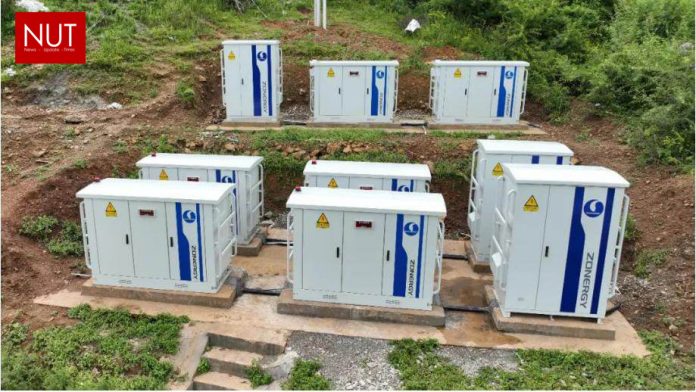Islamabad (Nut Desk)
Zonergy Corporation, World’s Leading PV Inverter & module manufacturer, has globally launched its Industrial and Commercial Energy storage system (Scopio) to cater growing needs of the European Renewable energy market. Industrial and commercial energy storage systems-Scopio specifically designed for European market requirement as it is composed of battery packs (Battery Pack), battery management systems (BMS), AC-DC power converters (PCS), energy management systems (EMS) and other electrical circuits, protection and monitoring systems, etc., and can also be equipped with photovoltaic Components, wind turbines, and other new energy sources. In 2009, EU leaders set a target of a 20% share of EU energy consumption coming from renewable energy sources by 2020. In 2018, the target of a 32% share of EU energy consumption coming from renewable energy sources by 2030 was agreed. In July 2021, in view of the new EU climate ambitions, the revision of the target to 40% by 2030 was proposed to the co-legislators. After the Russian invasion of Ukraine and the resulting energy crisis, the EU agreed to rapidly reduce its dependence on Russian fossil fuels before 2030 by accelerating the clean energy transition. According to the latest European Commission Staff Working Document, capacities of 592 GW1 of solar PV and 510 GW of wind are required by 2030 to achieve the 69% share of renewable electricity modeled by the Commission. This would require average annual additions of 48 GW for solar PV and 36 GW for wind. There are two mainstream business models for industrial and commercial energy storage. Users install equipment by themselves: it can directly reduce electricity costs, but users need to bear the initial investment cost and annual equipment maintenance costs. Adopt the contract energy management model: energy service companies invest in the construction of energy storage assets and are responsible for operation and maintenance, and industrial and commercial users pay electricity costs to energy service companies. The main profit models of industrial and commercial energy storage are self-use, peak-valley price difference arbitrage, and backup power. Self-consumption is suitable for industrial and commercial users whose photovoltaic and electricity consumption are basically synchronized, and the electricity price is relatively high. Using the energy storage system, on the one hand, the photovoltaic electricity price is lower than the grid electricity price, and on the other hand, it replaces the transformer capacity to reduce the maximum power consumption, thereby saving the average electricity consumption cost. As the peak-to-valley price difference continues to widen, the peak-to-valley arbitrage space is further opened up, and the economics of the industrial and commercial energy storage industry are gradually reflected. For enterprises with high shutdown costs, they will seek backup power sources to avoid losses caused by power cuts. The supporting photovoltaic and solar-storage integrated system can not only improve the utilization rate of photovoltaic power generation but also ensure normal production during power cuts by cutting peaks and valleys of photovoltaic power generation. As a backup power source, reduce unnecessary capital losses due to shutdown. The energy storage battery material system is mainly based on lithium iron phosphate, and the battery continues to evolve in the direction of large capacity. According to the requirements of the Ministry of Industry and Information Technology, the energy density of energy storage batteries is ≥145Wh/kg, and the energy density of battery packs is ≥110Wh/kg. Cycle life ≥ 5000 times and capacity retention ≥ 80%. The current electrochemical energy storage technology, especially lithium battery energy storage technology, has entered a new cycle of change. New products and technologies such as large cells, high voltage, and water cooling/liquid cooling are gradually on the stage, and energy storage systems continue to evolve towards large capacity. , At the same time, sodium-ion batteries may occupy a place in the future due to their cost advantages. At present, the battery energy storage system in the industry mainly adopts centralized PCS. The parallel connection of multiple batteries will cause an imbalance among the battery clusters. Over time, some batteries in the parallel battery clusters will appear to be insufficient in actual output, while the other part will be used beyond the rate, resulting in a ” barrel” effect. The string PCS starts to be applied on a large scale, and the string PCS makes up for the shortage of the centralized type and starts the large-scale application. The string PCS can realize cluster-level management, improve system life, and increase discharge capacity throughout the life cycle.






